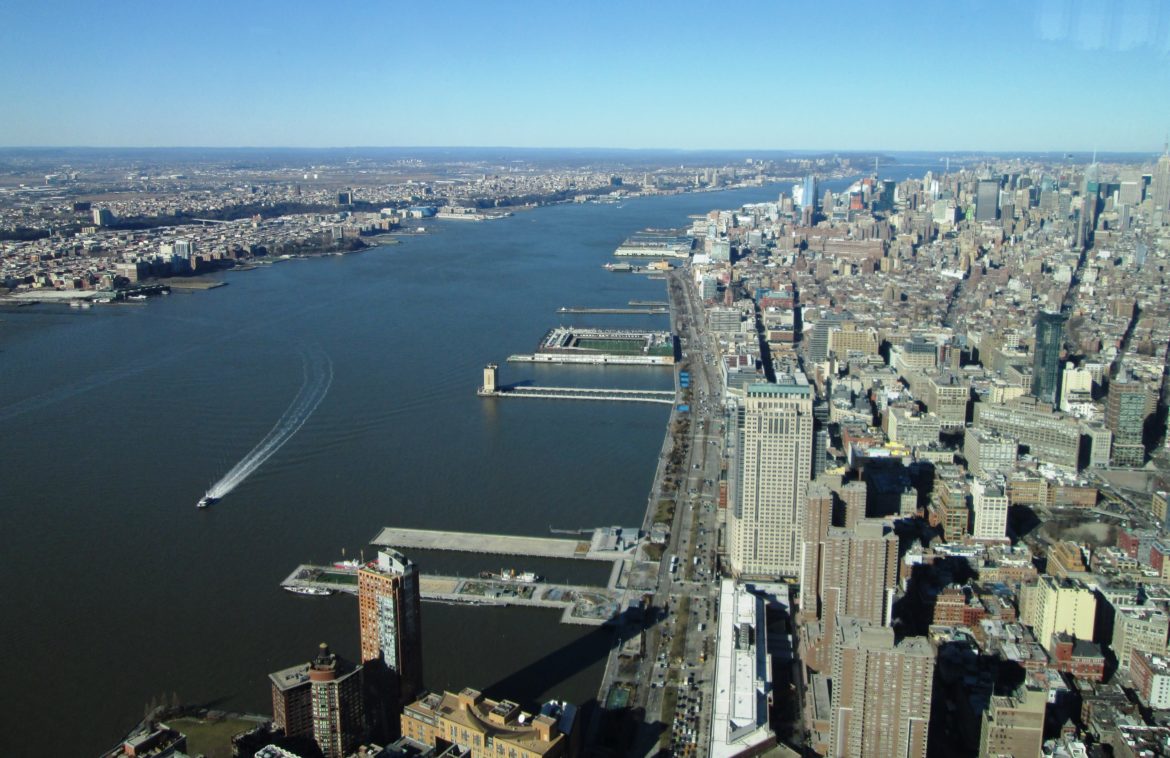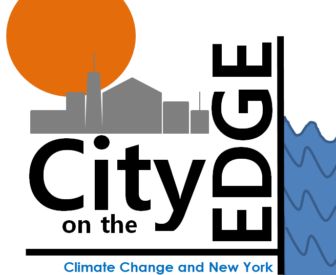
Beyond My Ken
The Hudson River, seen here flowing into New York Harbor, is tidally influenced as far up as Troy, some 150 miles north of the Bronx.
The Hudson River is the second most endangered river in the United States, according to a report released Tuesday. And the threat it faces isn’t a polluting power plant or a change in rainfall patterns or tidal intrusion. Rather, it’s a plan to protect the region from storm surges by building massive tidal gates.
The study by American Rivers, Inc., a nonprofit conservation organization, found the Gila River in New Mexico to be the one most at risk. That waterway faces the dual threat of climate change, which will eliminate the snowpack that feeds it, and a plan to divert some waters for agricultural and mining purposes.
The organization has produced its top-ten list 18 times over the past 21 years. This is the first time the Hudson has been on it.
The problem facing the Hudson, according to the report, is the possible plan by the U.S. Army Corps of Engineers to build massive sea walls across the harbor to block destructive surge from coastal storms. Earlier this year, the Corps–which began studying the need for new coastal defenses after 2012’s Superstorm Sandy–released an interim report on several potential approaches, nearly all of which involve large tidal barriers.
According to American Rivers
The storm surge barrier designs that the Army Corps is considering are essentially massive sea walls with gates. These walls could act like partial dams, blocking fish and wildlife, including Atlantic and short-nose sturgeon, American shad, American eel, river herring and sea lamprey, from moving up- and downstream, and restricting the natural flow of the river. Furthermore, barriers across New York Harbor would dramatically alter the tidal exchange essential to transport sediment, nutrients and contaminants. Obstructed by barriers, sewage and other contaminants could flush into the ocean more slowly, increasing localized pollution in the Harbor. With inhibited tidal energy, higher nutrient levels could lead to more frequent algae blooms and lower dissolved oxygen that would impact the health of the estuary and upriver tidal marshes. The tides are the heartbeat and respiration of the 155-mile estuary. Tides are essential to the river’s ecology. In-water barriers could strangle this ecosystem.
The Corps is right now holding hearings on the interim report (the final one is Wednesday night 5-7 p.m. at Hostos Community College, D Building/Savoy Manor Building, 120 East 149th St, 2nd Floor, Bronx, N.Y.) and has said it will not finalize a plan for many years, and only after a required environmental review.
But the Corps will narrow the scope of its study to one preferred alternative as early as this time next year. And that’s what concerns advocates for the river.
“The Corps admits that the Interim Report presents only a ‘partial’ analysis, lacking in many ways. It also admits that, as of now, it does not have enough information to make a recommendation on a tentatively selected plan. The report skips any attempt to consider the actual geology of the locations where structures would be built. It provides no actual plans or designs. We’re given regional maps and a few theoretical renderings,” wrote Riverkeeper, the leading advocate for the Hudson, in a blog post published Tuesday. “How can you possibly select among mere concepts, based on a narrow assessment of costs and benefits, when the Hudson’s vitality and the region’s economy are at stake?”
River advocates also worry the environmental review might be limited in scope. What’s more, they say, a surge barrier only protects against one form of threat posed by sea-level rise. “The in-water barriers, with gates that remain open for ships to pass except during occasional large storms, would do nothing to prevent the inevitable regular flooding that will increasingly come with sea level rise,” American Rivers writes.
According to Riverkeeper, only one of the alternatives being examined by the Corps is acceptable. Alternative 5, as it’s known, would eschew storm barrier and tidal gates and focus on levees, flood walls and other measures that are based on land.
The Hudson was an early focus for the U.S. environmental movement, and its growing health has been a testament to the impact that advocacy and regulation can have. Tuesday’s top-ten ranking is a reminder of how precarious those successes appear amid climate change (and continued challenges with industrial polluters, which American Rivers also mentions).
It’s not the only such reminder this week: The city’s Department of Environmental Protection was holding a meeting Tuesday night to update New Yorkers on its emerging “long term control plan” for reducing the impact of combined sewer overflows into the waterways that compose the city’s open waters, including the Hudson.









